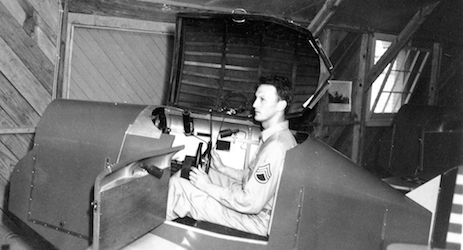Virtual Reality (VR) or its other common name Augmented Reality (AR) have recently come up as hot topics in the past few years in the world of gaming. Check out this graph on the history of the usage of the word:
 John Carmack, the lead programmer on the genre-defining hits such as DOOM and Wolfenstein 3D and current designer of the Samsung Gear VR and Oculus Rift software, said in an interview after earning his BAFTA Fellowship award,
John Carmack, the lead programmer on the genre-defining hits such as DOOM and Wolfenstein 3D and current designer of the Samsung Gear VR and Oculus Rift software, said in an interview after earning his BAFTA Fellowship award,
Obviously, virtual reality is where I’ve placed my bet about the future and where the excitement is going. At this point, I could say it’s almost a lock.
So clearly VR is pretty cool. I mean, in 2018 we even saw the adaptation of the bestseller Ready Player One— a story completely surrounding a society that became consumed by the virtual world and forgot about the real one. As of today, the movie earned $580 million worldwide in total gross.
But what does VR and AR have to do with the real (not fictional) world?
The origins of VR begin, unfortunately, where a lot of technology begins–in war. 1929, Edward Link created the Link Trainer: a flight simulator to train pilots in the military. It was entirely electromechanical with pedals and levers to change pitch and roll. Small motors that created turbulence was the actual simulation part of the machine. Sold at $3500, the machine would cost the equivalent of $50,000 today. During WW2, 10,000 of these Link Trainers were used to train over 500,000 pilots.

Today, of course, there are much more elegant uses of this technology– most notably in industry though its still very prevalent in military operations.
1. Retail
Have you ever saw a piece of clothing online–possibly very cheap compared to a designer store–but there’s no size chart? Are you a medium, possibly a large? You have no idea from the picture of the model. Well, worry no longer. Companies such as Bold Metrics can take a specific picture of a person and have the accurate measurements of your body to fit their clothes correctly. Imagine opening the American Eagle app, and instead of finding a shirt you like and debating for 10 minutes on the sizing chart, you automatically can click on buy now! Check out Safiya Nygaard’s video on an app she tried with the same concept:
2. Conferences and Meetings
Any Star Wars fans out there? Well all I can think of with a VR meeting is this scene (or multiple scenes) of the Jedi Council meeting from different parts of the galaxy.

This is only a small application (and not entirely accurate of how our VR works), but nevertheless, there’s already some pretty amazing uses of VR in the workplace today. Intel CEO Brian Krzanich took 250 headset-wearing attendees on a live industrial inspection of a 2,000-acre solar power plant in the Moapa River Indian Reservation. Can you imagine the cost of sending 250 people to the reservation, not to mention the logistics of organizing months in advance? Now any engineer can pull on a headset and view a broken machine to access from thousands of miles away, all within a few seconds.
3. Manufacturing
On that same note, manufacturers are using VR to see and use their products before they’re even created. I spoke earlier about 3D modeling and the capability it has to be simulated. Well, it’s easy to see how anyone could place on a headset and hand controllers to understand whatever product is being created. For education in this field, some technical schools are employing AR, for example, to teach students under the hood of a car to learn engine repair (see more here).
4. Healthcare
I could practically create a whole new blog post on how VR is transforming healthcare–physical, mental, and for elderly patients. First of all, scanning devices, such as MRI, can now be seen as 3D objects rather than pictures on a screen. Broken bones, smoker’s lungs, dysfunctional hearts–all now viewable outside the patient and able to run simulation surgeries. Accuvein, an scanner that tracks where a patient’s arteries and veins are, increased the nurse’s ability to find a vein on the first attempt 3.5x more likely. Mentally, patients with traumatic experiences can be placed into specifically designed therapy to improve their conditions. (I knew video games would help eventually!) If you’re really interested in this, I suggest going and checking out an episode of Black Mirror on Netflix–I won’t spoil the big twist, but it is highly enjoyable!
![]() Snapshot from Netflix’s Black Mirror Episode San Junipero
Snapshot from Netflix’s Black Mirror Episode San Junipero
So what do you think? Does my rambling about video games convince you that VR is the future? Or do you think that people will gravitate towards the real world again?
Leave a comment